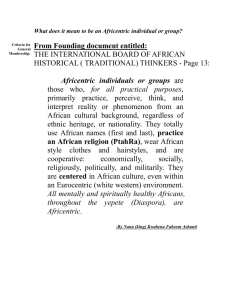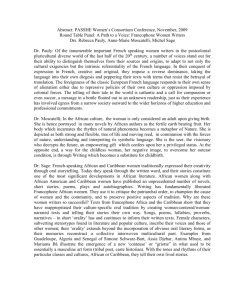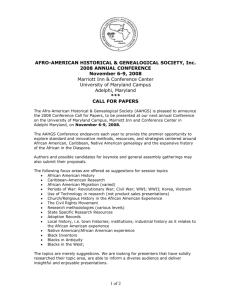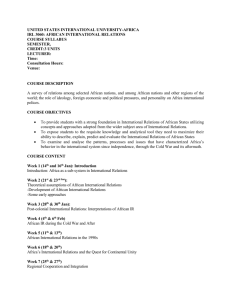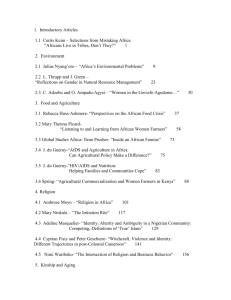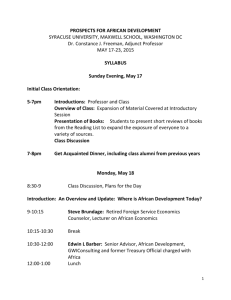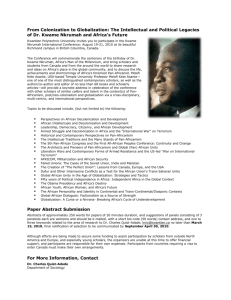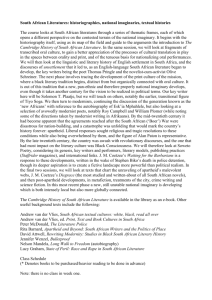Rethinking the North African Neolithic
advertisement
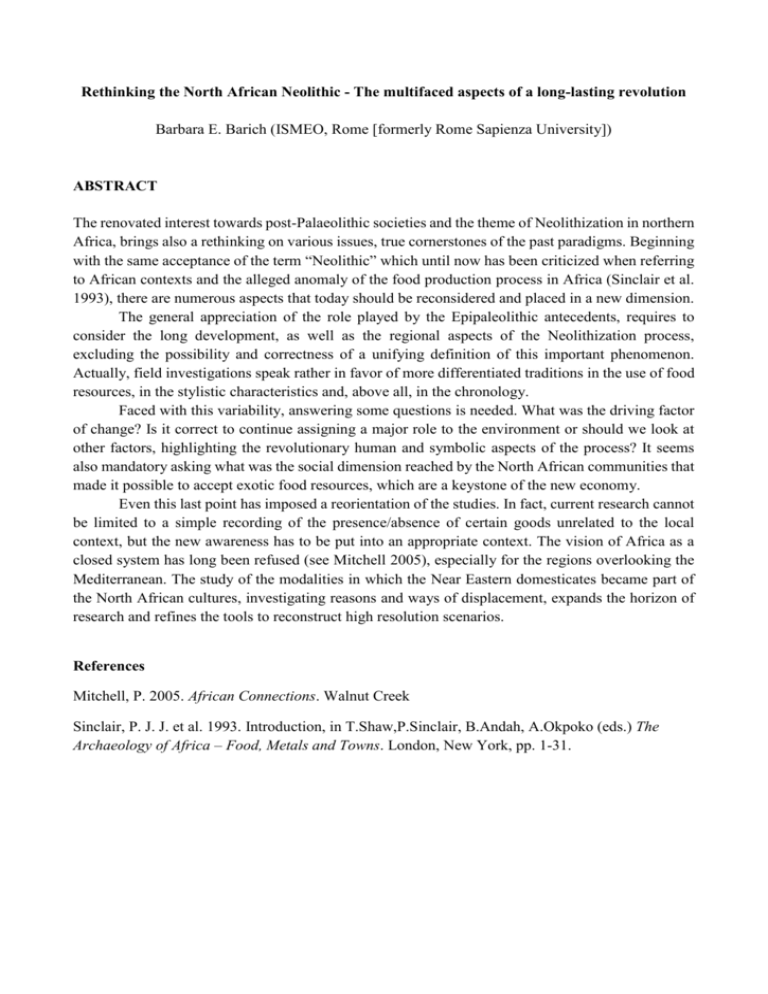
Rethinking the North African Neolithic - The multifaced aspects of a long-lasting revolution Barbara E. Barich (ISMEO, Rome [formerly Rome Sapienza University]) ABSTRACT The renovated interest towards post-Palaeolithic societies and the theme of Neolithization in northern Africa, brings also a rethinking on various issues, true cornerstones of the past paradigms. Beginning with the same acceptance of the term “Neolithic” which until now has been criticized when referring to African contexts and the alleged anomaly of the food production process in Africa (Sinclair et al. 1993), there are numerous aspects that today should be reconsidered and placed in a new dimension. The general appreciation of the role played by the Epipaleolithic antecedents, requires to consider the long development, as well as the regional aspects of the Neolithization process, excluding the possibility and correctness of a unifying definition of this important phenomenon. Actually, field investigations speak rather in favor of more differentiated traditions in the use of food resources, in the stylistic characteristics and, above all, in the chronology. Faced with this variability, answering some questions is needed. What was the driving factor of change? Is it correct to continue assigning a major role to the environment or should we look at other factors, highlighting the revolutionary human and symbolic aspects of the process? It seems also mandatory asking what was the social dimension reached by the North African communities that made it possible to accept exotic food resources, which are a keystone of the new economy. Even this last point has imposed a reorientation of the studies. In fact, current research cannot be limited to a simple recording of the presence/absence of certain goods unrelated to the local context, but the new awareness has to be put into an appropriate context. The vision of Africa as a closed system has long been refused (see Mitchell 2005), especially for the regions overlooking the Mediterranean. The study of the modalities in which the Near Eastern domesticates became part of the North African cultures, investigating reasons and ways of displacement, expands the horizon of research and refines the tools to reconstruct high resolution scenarios. References Mitchell, P. 2005. African Connections. Walnut Creek Sinclair, P. J. J. et al. 1993. Introduction, in T.Shaw,P.Sinclair, B.Andah, A.Okpoko (eds.) The Archaeology of Africa – Food, Metals and Towns. London, New York, pp. 1-31.






